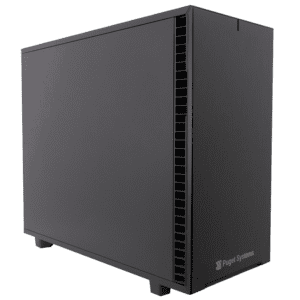Clock speeds on modern Intel processors are not straight-forward, a fact that is attested to by the several articles we have published on that topic in recent years. This can lead to confusion over what CPU to pick when configuring a new computer, especially for higher-end workstations and servers with high core count processors. I am hoping this blog post will shed a little light on that subject, and help readers be better able to select the right CPU for their needs.
Why to Choose a Xeon
Despite Intel directing the Xeon processor line toward specific types of computers – primarily servers and workstations – there has been some confusion over when they are the appropriate choice versus a more mainstream processor. I’ve had gamers ask about Xeons because they thought they were more powerful, and likewise I have had businesses ask about running servers on Core i7 processors. So when does a Xeon make sense, and what do they really bring to the table?
The Continual Rise of the SSD
Just over a year ago I wrote how Solid State Drives (SSD) were soaring in popularity. At that time we offered a number of SSD models from Intel. But due to production constraints, we were on the verge of adding a few Samsung SSDs to the mix. Around this same time we began fielding a number of requests for Samsung SSDs.
Once considered a luxury item, SSDs have moved into the mainstream within the past two years. Our customers tend to be tech savvy and performance demanding to the core. So I wasn’t surprised to find widescale adoption of SSDs as I dove into the sales data.
Z68, Z77, and H77 – What is the difference?
Intel is nearing the release of their third-generation Core Processor platform, and in preparation they have launched several new motherboard chipsets this week. For desktops, there are four variants: Z77, Z75, H77, and B75 – with a couple more coming later in the year. What’s the difference? We’ll tell you!
H67, P67, and Z68 – Which one is right for you?
Intel’s Sandy Bridge processor architecture is turning 6 months old in July, and has been a major seller in the PC market in these few short months. There was a slight hiccup a month after it was released, when it was found that there was a defect in the SATA controller of the chipsets designed to work with these processors, but that has long since been resolved and no further problems have arisen.
Core i3/i5/i7 Processors: Intel’s New CPU Line
When Intel first debuted the Core i7 processor line, code-named Nehalem, in late 2008 it made perfect sense. This line of quad-cores brought several new technologies: Turbo Mode, integrated memory controllers, triple-channel RAM, and Hyperthreading (making a comeback from the Pentium 4 era). There were three processors at launch, a 920, 940 and 965 – each slightly faster than the one before it, with the ‘5’ at the end of the last denoting that it was an Extreme Edition chip with some unlocked settings to help with overclocking. Over time the 940 was replaced with a 950, and then 960; the 965 also got an upgrade in the form of a 975. The naming scheme now isn’t so simple — let’s take a look.
Minor Hiccup on New Intel SSDs
It seems like everyone has been excited about the recent release of Intel’s second-generation solid state drives (SSDs) this week. I am the proud owner of one of the first-gen models, and the idea that more affordable models will help more people to adopt this technology is just cause for celebration.
It came as quite a shock to me, then, when we were told to hold delivery of the drives to end-users this morning – just before our first shipment came in to the Puget warehouse.
Intel Core i7 Temperatures
There has been quite a bit of talk recently about Intel Core i7 CPUs and what temperature they should be running. The Core i7 CPUs have a TDP of 130W, and run quite hot compared to the Core 2 Quad CPUs we’ve used in the past. How hot is too hot? A Google search shows that there is massive confusion and misinformation around the web. In the absense of good information, I decided to find out for myself. As an Intel Premier Provider, I talked to an Intel engineer, and am writing to tell you what I found.
Drooling Over New Technology
I don’t drool often, but I have to say — this is an exciting time to be in the technology field. We work closely with both Intel and nVidia, and they both have new products out that are changing the way I look at high performance computers.
